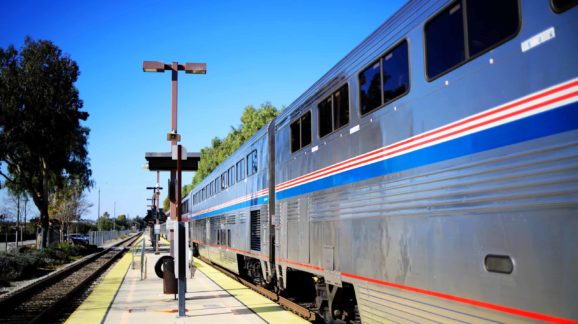INVEST in America Act Is a Bad Investment
It would massively increase public spending, prod us unwillingly onto public transit, and make our goods and fuel more expensive to please labor unions.
The House of Representatives will soon vote on the “Investing in a New Vision for the Environment and Surface Transportation in America (INVEST in America) Act” — a piece of legislation that would spend half a trillion dollars over five years on surface transportation. Despite the proclamation in its title, the bill is a bad investment for America. In addition to massively increasing public spending, it would also disproportionately privilege little-used transit programs compared with roads that people do use and hurt America’s successful freight rail industry. While surface-transportation funding needs to be renewed, the INVEST in America Act is not the proper way to do it.
As a general matter, the bill does wisely prioritize maintenance of existing roads and bridges — something that Congress has given lip service to over the years but has never really tackled. The vast majority of miles traveled by Americans is by road, and those roads need to be up to speed to allow their most efficient use. This is the one piece of the president’s infrastructure plan that has widespread bipartisan support.
Scrutinize this a bit more closely, however, and that positive goal begins to be railroaded by massive and poorly targeted spending for spending’s sake. The bill increases highway spending from about $250 billion to well over $300 billion over five years, according to the Congressional Research Service. Part of the reason it does so is because it reintroduces earmarks — otherwise known as “pork” — into the process. Indeed, Section 107 of the bill lists nearly 1,500 projects designated by House lawmakers for funding. (The Senate has yet to get in on the act.) Building new road projects because they are actually needed — rather than pleasing politicians — is apparently not the purpose of this legislation.
Beyond that, the bill goes into overdrive by adding large sums on new programs designed to implement the president’s (unrelated) climate agenda. For instance, after 2022 it includes almost $20 billion for items such as carbon-pollution-reduction programs (rewarding states that reduce carbon emissions the most and penalizing the ten states that do the least) and building a network of electric-vehicle charging stations. The latter item should raise an eyebrow: Recall that gas stations spread quickly across the U.S. without public subsidy in the early 1900s as a response to consumer demand. If electric vehicles are as popular as their adherents claim, falling EV prices should naturally spur this demand. Charging stations built based around what the federal government wants consumers to want rather than what they actually want are unlikely to survive — just think of all the remarkable ways your local gas station finds to anticipate and provide extra goods and services that motorists would like to buy.
A considerable part of the bill’s focus on climate relies on a truly enormous investment in transit and passenger rail, which receive $165 billion compared with highways’ $319 billion. Yet in 2019, Americans traveled over 100 miles by road for every mile traveled on transit — only 2.5 percent of total trips were by bus, light rail, or commuter rail in 2017. That was also before the pandemic crushed transit travel. Early signs of the recovery suggest that Americans are reluctant to return to public transportation.
This effectively undermines support for the bill’s lopsided investment in transit. The argument is that Americans just don’t have access to transit, but that if the federal government were to help cities and states build it, people would enthusiastically jump out of their cars and ride the rails. (This approximates a Field of Dreams–style argument, if you will.) Yet transit supply has outpaced demand for decades. Add a post-pandemic reluctance to share confined spaces with other Americans who might be carrying diseases, and you have a recipe for intensifying that divergence. If cities and states build all these transit projects, America could be left like Spain, littered with gleaming transportation projects that no one uses.
Read the full article at National Review.
